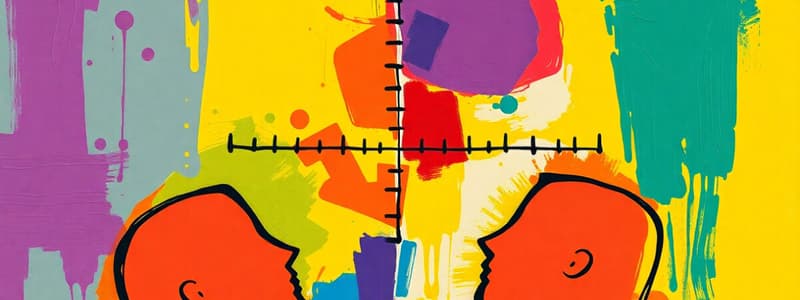Podcast
Questions and Answers
What is an attitude?
What is an attitude?
A positive or negative reaction towards a stimulus, such as a person, action, object, or concept.
What are the three components of attitudes?
What are the three components of attitudes?
- Cognitive (correct)
- Social
- Behavioral (correct)
- Affective (correct)
Attitudes do not predict behavior.
Attitudes do not predict behavior.
False (B)
What is cognitive dissonance?
What is cognitive dissonance?
Which technique relies on participants believing they are being tested about their true opinions?
Which technique relies on participants believing they are being tested about their true opinions?
What factors must be considered to demonstrate the relationship between attitudes and behavior?
What factors must be considered to demonstrate the relationship between attitudes and behavior?
According to emotional appeals, which condition is necessary for fear to be effective?
According to emotional appeals, which condition is necessary for fear to be effective?
What is attitude resilience?
What is attitude resilience?
The Likert scale measures agreement or disagreement, typically on a scale of 1 to ______.
The Likert scale measures agreement or disagreement, typically on a scale of 1 to ______.
Flashcards are hidden until you start studying
Study Notes
Attitude and Attitude Change
- Attitudes are positive or negative reactions towards stimuli like people, actions, objects, or concepts.
- Attitudes influence perception and behavior, with three main components: cognitive, affective, and behavioral.
- Individuals generally hold attitudes on a wide range of topics.
Techniques of Attitude Measurement
- Likert Scales: Measure agreement with statements on a seven-point scale, but can be affected by honesty and social desirability bias.
- Unobtrusive Methods: Techniques such as the bogus pipeline, where participants believe their true opinions are being measured, reducing the likelihood of dishonesty.
- Electromyography (EMG): Monitors facial muscle activity in response to emotions, indicating attitude alignment with supportive or contradictory video content.
Attitude-Behavior Relations
- There's ongoing debate about whether attitudes predict behavior consistently.
- A significant study by LaPiere (1934) found a disparity between expressed racist attitudes and actual behavior toward a Chinese couple in restaurants and hotels.
- The Theory of Planned Behavior suggests that attitudes predict behavior when:
- There is a positive attitude towards the behavior.
- Norms are supportive of the attitudes.
- The behavior is within personal control.
- Many studies may overlook these critical conditions, affecting the observed relationship between attitudes and behavior.
Attitude Stability and Change
- Attitudes tend to be stable over time; for example, a 15-year study found consistent attitudes toward capital punishment.
- Attitudes can change due to:
- Cognitive Dissonance: Conflict between attitudes and behavior leading to attitude adjustment; for instance, more confident attitudes in bettors regarding winning.
- Influences from credible, trustworthy, attractive, or likable sources; effective messaging presented quickly.
- Emotional appeals, especially when the message induces moderate to strong fear, coupled with practical solutions for mitigating that fear.
Attitude Resilience
- Individuals can protect their attitudes from change through rehearsal of counterarguments.
- A study by McAlister et al. (1982) demonstrated that teaching teenagers counterarguments reduced their likelihood of smoking.
- Developing resilience against attitude change can be a defensive strategy against negative influences.
Studying That Suits You
Use AI to generate personalized quizzes and flashcards to suit your learning preferences.




